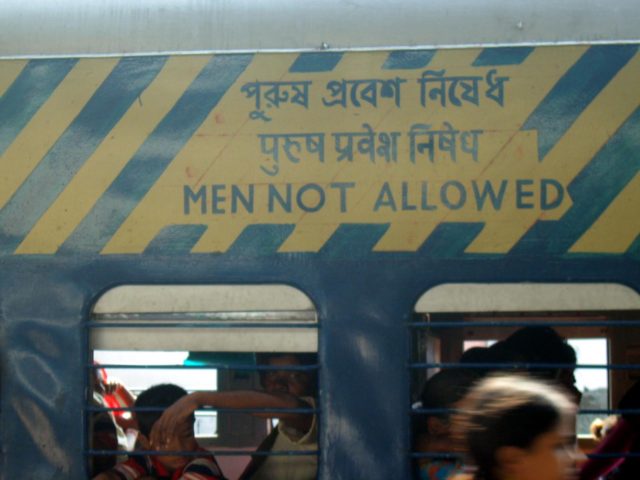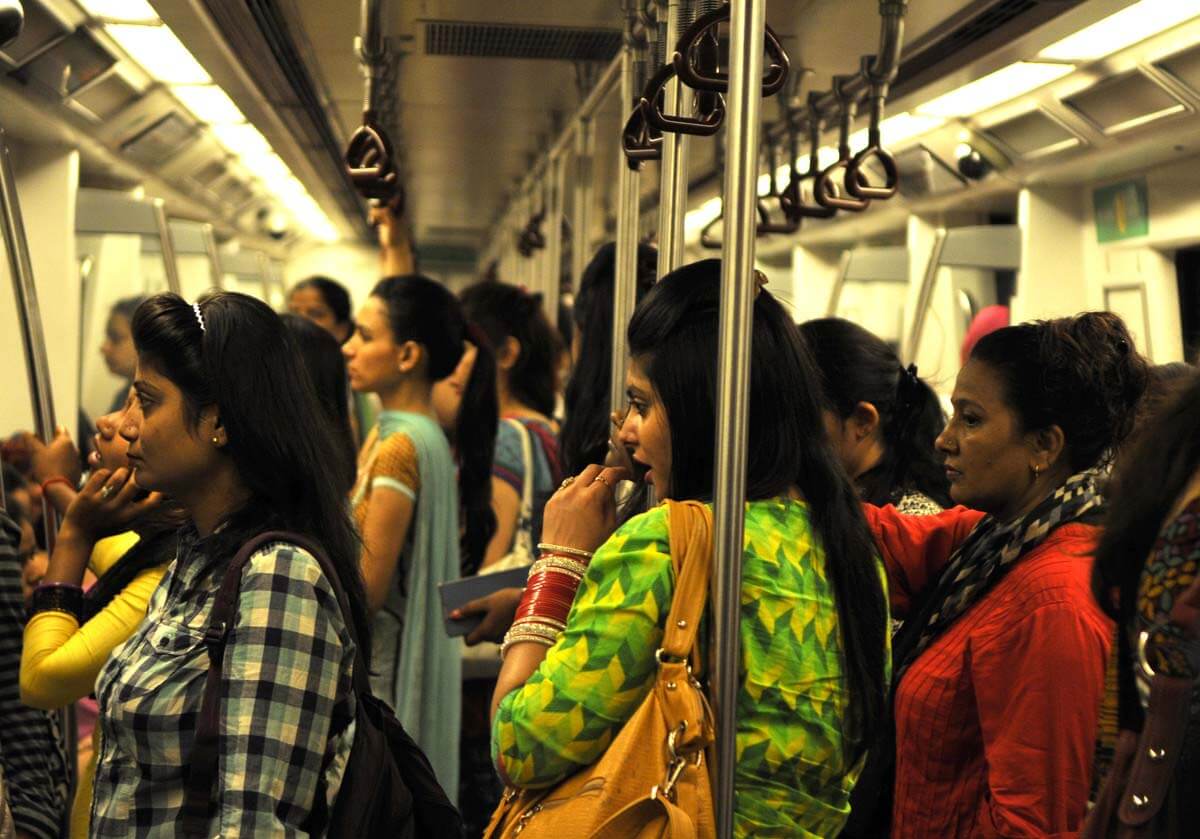Disclaimer: Originally published in November 2018. It is being republished since it still remains an interesting topic till today.
FlippED: An ED Original style wherein two bloggers come together to share their opposing or orthogonal perspectives on an interesting subject.
By Chitra Rawat and Kanika Kalra
We already have sex segregation in trains and buses, and even not long ago news came out that Air India was going to have six reserved seats in the front rows of its aeroplane fleet for female passengers, without any extra charge.
This got our bloggers debating the effectiveness of sex segregation as a way to combat sexual harassment. Read on to find out what they have to say.

“Positive discrimination is always necessary to allow a marginalised group feel protected.”
– Blogger Chitra Rawat’s perspective
Too much of social exclusivity leads to social isolation. Okay, I admit it.
When something gets stretched way beyond a limit, the negative side gets to the forefront.
People might term Air India’s decision as regressive or even discriminatory. It is discriminatory, of course. But there are two types of discrimination that exist.
If we do not positively discriminate against a particular minority that has been suffering, how can we ever assure them of their safety? And this is exactly what Air India had replicated with that policy.
You might complain that there are separate coaches for women, but take this – no one is being coerced to take the front coach of the train where the female population is concentrated. The rest is “general” which means anyone can travel there – be it a man or a woman.
Going by the aforementioned argument, who will actually travel by the “women’s” division? Obviously, those who feel intimidated travelling in cooped up general compartments because they fear being groped or touched inappropriately sans consent.
Charity begins at home and so does education. We are cribbing about issues like having a separate compartment for women, and mind you, these are women who feel unsafe and CHOOSE TO board such compartments, but we are too reluctant to give an education to adolescents about sex and abuse. Things don’t quite fit in.
Women are vulnerable everywhere. Even if it is air travel. It is no secret that drunk brawls happen sometimes or solo travellers might feel a sense of discomfort. Hence it makes sense to introduce exclusive spaces for women.
Technically, it irks people that there are spaces being created exclusively for women, but that creation of space is not a setup of the society, but just a cushion to absorb the turbulences while the society is being educated.
Sadly, we don’t see much education happening, and that is the reason this creation of spaces will continue for long.
Read More: FlippED: Why Do Millennials Hate Kids?

“Granted, India is one of very few countries to have successfully implemented reserved spaces for women on public transport, but I believe it is a very regressive solution to the problem of sexual harassment.”
– Blogger Kanika Kalra’s perspective
Let’s keep air travel aside for a minute.
I benefit from the women-only cars in the Delhi Metro and the ladies coaches in the Mumbai local on a regular basis – but even though it makes travel more comfortable for me today, the world, sadly, does not revolve around me.
I have to force myself to step outside my personal bubble of convenience and look at the bigger picture.
Women-only public spaces are tempting: a respite from the never-ending groping, stares and inappropriate comments.
But do we really want to send the message that it is women who need special spaces to avoid harassers, rather than men who need to leave women in peace regardless of where we are?
If we’re really going to resort to gender segregation, why stop at trains and buses? Street harassment is a huge problem, so should we designate women-only side-streets where we can walk free from eve teasers?
Sex segregation in public transport is harmful in the long run.
Case in point: Once, on boarding a general compartment in the Mumbai local, a man asked me to disembark the “gents” compartment because it was troublesome for everyone when ladies got on.
Now, see, there’s no such thing as a “gents” compartment. It is a general compartment, I can board it if I want to, and I told him as much.
Like other forms of violence prevention which promote the idea of “your safety, your responsibility”, women-only transportation leaves openings for victim-blaming.
Women who choose to not travel by ladies-only coaches are seen as fair game sometimes. The ‘why are they here if not to be felt up’ logic.
Women need to be able to occupy public spaces and use public transport in the same way that men do. We need to be able to commute to work and walk the streets without fear – and a women-only train car doesn’t do anything but offer a temporary solution filled with too many gaps.
Clearly, our bloggers stand firmly by their opinion on this topic. But, after reading both sides of the argument, what do you think?
Is sex segregation in public transport a good idea? Let us know in the comments.
Image Credits: Google Images
You’d also like to read:
Gender Neutral Bathrooms In The United States- What Is The Debate All About?






























